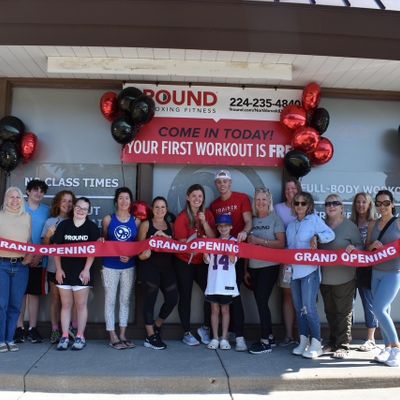High-Impact vs. Low-Impact Exercises

When thinking about your weekly workouts, one major thing to consider is the impact different moves have on your body. Generally speaking, exercises can be broken down into two simple categories – high impact and low impact.
While they’re both used to accomplish different fitness goals, a healthy combination of the two will yield the best results. How much of each you incorporate into your routine will be based on what you want to accomplish and your body’s capabilities. Take a look at the differences between high-impact and low-impact exercises below to learn how to properly balance them in your workout routine.
High-Impact Exercises – Explosive and Energetic
If you want to push yourself to work harder and AMP up your workouts with more intensity, then you’ll want to incorporate some high-impact exercises to help challenge your body. These explosive and often fast-paced movements will require a lot more energy from you, which means they’ll help you burn more calories with every rep.
High-impact exercises go beyond your everyday movements to push the boundaries of what your body can do. This helps you take advantage of the SAID principle (specific adaptions to imposed demands), which says your muscles will work to adapt and overcome any stresses placed on them, making high-impact exercises the perfect solution for anyone who wants to build stronger muscles and increase endurance.
However, keep in mind that these exercises are not designed for taking things slow and steady, so if you’re someone who experiences chronic joint pain, is injured, elderly, or pregnant, then we highly recommend steering away from too many high-impact exercises and sticking to more low-impact moves.
Examples of High-Impact Exercises:
- Running
- Jumping jacks
- Squat jumps
- Burpees
- Box jumps
- Jumping shin kicks
Low-Impact Exercises
On the other end of the spectrum, we have low-impact exercises, which are going to be much gentler on the body compared to high-impact exercises. These moves typically don’t involve a lot of jumping around, and they’re better for people who are older, pregnant, experiencing joint issues, or have an injury.
Low-impact exercises often use more controlled movements that focus on taking advantage of your full range of motion while still making sure to engage your muscles. This means they can also help with strength building and conditioning, like high-impact exercises, to help make your joints and muscles stronger over time, but the process is going to be much easier on your body.
You can mix in some low-impact moves when you want to relax in between sets or need a break from your usual high-intensity workouts. These moves are also what you need if you’re recovering from an injury, experiencing joint pain, or working out through your pregnancy.*
Examples of Low-Impact Exercises:
- Walking
- Cycling
- Swimming
- Bodyweight exercises without jumping
- Shadowboxing
One of the best parts about working out at 9Round is that we take care of the workout planning for you! Our team of certified Exercise Specialists combine both high- and low-impact moves in every Daily Workout, so you can maximize your results in just 30 minutes. Not only that, but our trainers will make sure anyone is capable of completing an entire workout with different modifications that can help you take things at a slower pace or up the intensity for a greater challenge.
Stop by your local studio today for a FREE Introductory Workout or schedule your preferred time below, and we can show you how our workouts can make your stronger in just 30 minutes! We can’t wait to show you how fun and effective our KILLER kickboxing workouts are!
This is not medical advice. Please speak with your doctor regarding any health concerns and before starting a new workout routine. This article was written in conjunction with our certified 9Round Exercise and Nutrition Specialist, MacKenzie Rowand, CSCS, NASM-CNC.


